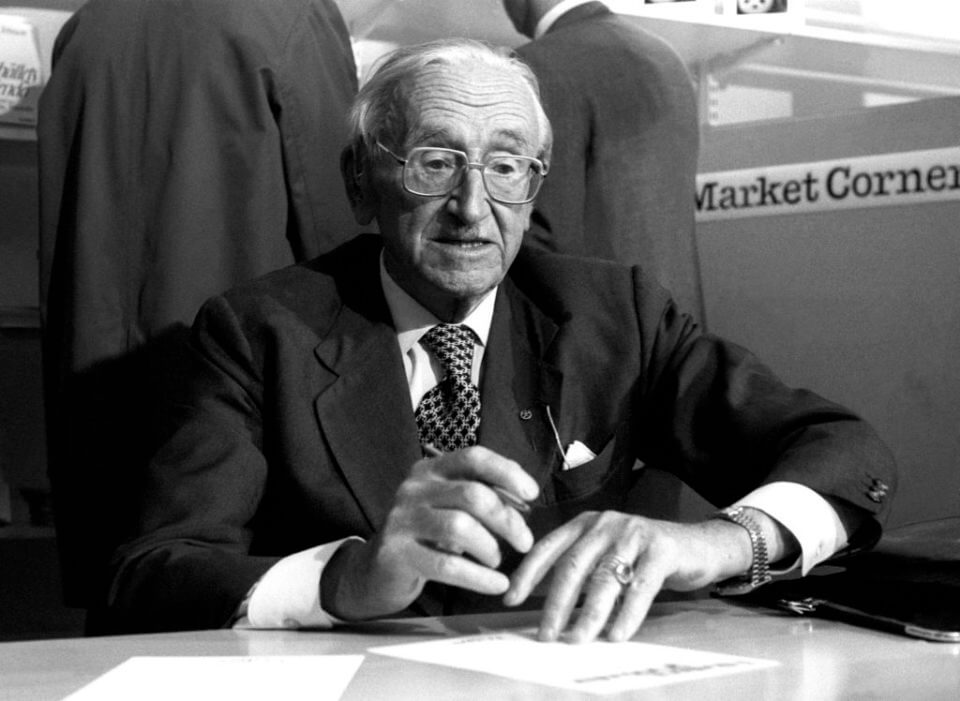
“The most committed liberal would believe that perfection is unattainable, while the socialist would contend that it is not only possible but necessary.”
One of the most consistently repeated criticisms of socialism coming from the economic right has to do with the inability of a centrally planned economy to efficiently allocate resources. They argue that this is due to the difficulty that arises from processing the large amounts of information that go into every economic transaction. While this criticism has some merit, I do not think it can be considered a criticism of socialism writ-large—but rather only of centralized Soviet-style socialism. This is an important issue to address from the Left because—with renewed interest in socialism around the world—much of the criticism coming from conservatives or libertarians invokes some version of this argument. More on this later, but first I want to address what I see as the fundamental insights that this line of critique provides. Perhaps the most famous thinker associated with it is Austrian economist Friedrich Hayek. It is most clearly laid out in his article “The Use of Knowledge in Society,” which describes markets as mechanisms for the exchange of the total knowledge that is necessary to calculate the total production of allocation needed in an economy. This is what is commonly known as the calculation problem. The basic argument is that the knowledge needed for the full calculation of an economic transaction is so specific and sensitive to contextual variables such as time and place that aggregating it would be impossible, so it is best left decentralized and in the hands of the agents best suited to apply it: namely, individuals interacting in the market.
The roots of this line of reasoning can be seen already with the neoclassical economists of the mid-to-late 19th century. At its core, I believe it can be reduced to a disagreement between the labor theory of value (LTV), espoused by Marx, and the subjective theory of value (STV), of which Hayek was a proponent. One interesting aspect of this dichotomy is that—while the former is usually associated with left-wing economics because of Marx and the latter with the Right because of the Austrian School—it is mostly a matter of historical accident. It could have easily been the other way around. LTV is most commonly known as one of the underlying principles of Marx’s theory of exploitation, but the idea did not originate with Marx or Engels, but rather with Adam Smith and David Ricardo, two of the founders of mainstream classical economics. And while Smith, unlike the caricature of him that is often created, certainly had pointed critiques about the fairness of capitalism, he was still a firm believer in a market-based economy, as was Ricardo.
The point of this brief historical detour is simply to show that there is nothing inherently right-wing or left-wing about either theory of value. They are both simply descriptions of the formation and change of a particular economic variable.
On the other hand, STV is most closely linked with the Austrian School of economics. This is a fair association, but it is not the whole story. It was originally developed separately and simultaneously during the second half of the 19th century by three economists: Carl Menger, founder of the Austrian School, William Stanley Jevons, and Léon Walras. All three were separately working on what is now known as General Equilibrium Theory, of which STV is a necessary component. Interestingly, Walras was a self-described socialist (albeit with some qualifications). His brand of socialism is closer to what is now commonly referred to as Georgism, due to American economist Henry George (though Walras first published on the subject in 1861, a few years before George). Walras advocated for a free market economy in which capital, production, and exchange remain in the hands of private actors. However, he also proposed the full socialization of the product of land. This included, not only taxation on land value but even the repurchase of all land by the state so that it could be publicly owned and land rents could become socialized wealth.
The point of this brief historical detour is simply to show that there is nothing inherently right-wing or left-wing about either theory of value. They are both simply descriptions of the formation and change of a particular economic variable. However, the adherence to a particular theory does have an impact on the conclusions that one might reach regarding other aspects of the economy. Let us then look more closely at the Austrian critique of socialism and see how the different perspectives on the concept of value play into the more orthodox socialist position, as well as the kinds of criticism, and how the objections can be overcome.
I already described the central idea of Hayek’s criticism but not how it draws from the subjective theory of value—nor how the labor theory of value supports the system that Hayek is criticizing. A common misconception about Marx’s version of LTV is each individual commodity derives its value from the total labor put into its production. In reality, Marx’s view is a good deal more complex, and he even addresses this particular misconception in Value, Price and Profit. If this were the theory, it would run into many rather silly problems. For instance, a slow or clumsy worker would produce more valuable commodities than an efficient one because it would take him or her more labor time to produce it. This, of course, makes no sense and would make for a rather poor theory. Instead, what Marx actually proposes is that the value of a commodity is a function of what he calls the “socially necessary labor” to produce it. A way to understand this concept is something like the most efficient way in which a commodity can be produced given a society’s overall technological state. As technology progresses, the amount of socially necessary labor is therefore reduced, and the value moves with it. That means that the actual amount of labor put into an individual good is mostly irrelevant. This distinction is important because the proper understanding of the way value is calculated in Marx’s view is at the heart of the disagreement.
If value is a function of the state of technology in a particular society, then the calculation of the value of commodities is not all that difficult. From this perspective the notion of a centrally-planned economy is feasible: all that is needed is to keep track of the state of technology, from which prices can then be derived (price, says Marx, is just the monetary expression of value). From the perspective of STV, however, value is a function of relative scarcity. (That is, how rare is a certain commodity at any given time with respect to others.) From this point of view (and this is one of Walras’s objections to LTV), labor is not the source of value. Instead, it has value for the same reason that any other commodity has value: firstly, because it is limited, and secondly, because it is useful. Its value depends, like is the case with everything else, on how rare it is in comparison to other limited and useful commodities. When Walras was writing, there were several concepts that now are fundamental to the concept of value in neoclassical economics, such as elasticity, which was not developed until the 1890’s by Alfred Marshall. Elasticity is the idea that a commodity is valuable also as a function of how necessary it is—and not just its relative scarcity. So, for instance, certain kinds of drugs for rare diseases have a highly inelastic demand. In other words, their demand function is not sensitive to changes in price and, therefore, will be highly valued.
Elasticity simply adds another layer of complexity to STV, but it can be safely ignored for the present purpose of comparing both theories of value. Recall that Hayek’s central argument is that the information, which is required for the correct calculations for production and exchange value in an economy, is so disperse and context sensitive that trying to create a central body to aggregate it would be impossible. Of course, the state of technology and “socially necessary labor” would factor into STV, but there are multiple other contextual factors that count, such as usefulness and scarcity, which complicate the aggregation of information and the subsequent calculation. This is from which market mechanisms derive their usefulness.
In my view, it is hard to argue that that these other factors have no part to play in the calculation of value, and even more so, that value is not, ultimately, subjective. As I said initially, however, this line of criticism can only be understood as exclusive to that of centralized Soviet-style socialism. Furthermore, the moral aspects of Marx’s theory of exploitation do not lose their power simply because there is a better way to calculate value, and, in fact, I believe one can simply reinterpret LTV as a moral parameter through the lens of STV. Marx’s argument about exploitation is that members of the proletariat, owning no capital themselves, can only sell their laboring power, which is a commodity that can be valued like any other. Laboring power is a person’s capacity to labor, which is separate from the actual labor that they perform. Laboring power may allow someone to perform ten hours of labor, but another person might perform twelve hours. Its value is determined by what a person must consume to replenish it. To use an extremely simplified but illustrative example: if a person needs to consume one meatloaf and two apples to replenish his or her laboring power, then the value of their laboring power is the value of the socially necessary labor needed to produce one meatloaf and two apples. So, a proletarian works for the capitalist a certain number of hours. Part of those hours correspond to the value of their laboring power; the rest of the time is worked for free and, therefore, constitutes exploitation.
Even if we reject LTV as an accurate description of the way society and individuals value commodities, there are certain insights that remain true. The most obvious one is that: if workers owned capital, their work would have higher returns. So it can be taken as an axiom that the value of a product is a function of relative scarcity and other subjective factors such as usefulness. Yet, if we compare what a worker would earn for his or her job with what a different worker (who owns capital) would earn doing the same job, it is obvious that the latter would make more every time. That insight is what I mean by interpreting LTV through the lens of STV. We can grant that value does not come from labor, but it remains true that workers still only have their labor power to sell, which puts them in a position where the compensation for their work will always be a fraction of what it could be if they also owned capital.
If a market mechanism is needed to process information and calculate prices, but workers can only fully earn their potential in a situation where they also own capital, the solution is fairly obvious. We can have the best of both worlds in an economic arrangement which is similar to ours with the caveat that companies are collectively owned by the employees. Of course, this begs the question of what is the rationale for moving towards an arrangement like this. At the heart of this is a fundamental question of distributive justice. The collectivization of private companies involves some measure of redistribution, which, along with the calculation problem, is the other main gripe that conservatives and libertarians have with socialism. The issue is why should property be transferred from one party to another in any circumstance other than the voluntary agreement between the two. Doing so in the name of a more just or equitable distribution would not be a strong enough reason for them. This argument was most clearly laid out by Robert Nozick in Anarchy, State and Utopia with his famous Wilt Chamberlain example. He discusses “patterned distributions.” These are distributions which are arranged according to a certain set of rules or principles, such as Rawls’s two principles of justice, or utilitarianism. Nozick argues that even extreme levels of inequality are morally acceptable if they result from voluntary transfers. For example, it is just that Wilt Chamberlain would become incredibly wealthy (much more so than anyone else) because people voluntarily pay money to see him play basketball because of his skill.
Now, I have no idea if Shapiro ever read Nozick, so I do not know if that is the origin of his reasoning. But, in any case, these types of status quo defenses are a rather simplistic—if not willfully misleading—versions of the argument.
This line of reasoning is commonly employed by conservatives as an argument against redistribution. Ben Shapiro, for example, is particularly fond of it. It is rarely done as eloquently as Nozick did it. More importantly, however, its contemporary usage is nothing more than a defense of the status quo, current levels of inequality included, as Shapiro did it in a 2017 piece for The Daily Wire. In it, he argues that criticizing the present global distribution of wealth (for example, the fact that the 26 richest people in the world own as much wealth as the poorest 50% of the world is “a stupid talking point”) because the wealth of those 26 people was not ill-gotten. Now, I have no idea if Shapiro ever read Nozick, so I do not know if that is the origin of his reasoning. But, in any case, these types of status quo defenses are a rather simplistic—if not willfully misleading—versions of the argument. Nozick is quite clear on two points. First, the full history of actions that led to a certain distribution matters when judging whether that distribution is just; and second, redistribution is acceptable if its purpose is the rectification of past historical injustices, such as property acquired through violence. He does not have prescriptions for how rectification should happen, but he makes it explicit that the full history, if it is known, is relevant. That means that it does not matter if a particular individual acquired wealth only through voluntary transactions; if there is a known instance in the past of acquisition through violence, for example, any distribution down the line that can be traced to it is necessarily unjust.
I think that world-shaping events such as slavery and colonization, along with privileges such as nobility, have presently not fully disappeared. It is hard to judge any current distribution of wealth as fair, even by Nozick’s own libertarian principles. Therefore, it is irrelevant that a particular billionaire today acquired his wealth in a completely lawful manner. The starting point was never fair to begin with, and a just outcome cannot arise from unfair conditions. The case for redistribution thus becomes much stronger. That is not to say no case against it can be made, but it should be acknowledged that it would chiefly be a defense of the status quo for its own sake, which is less attractive than defending a distribution that arose solely out of voluntary exchanges between free and equal individuals. Furthermore, redistribution does not need to be done by force, and it also does not have to be fully equal. Marx himself advocated for unequal compensation for unequal work. As for the process of redistribution, there are multiple options. For example, employees could be compensated with stock in the company rather than wages. In fact, this is done already in various companies. Another option is the policy of Right of First Refusal, which allows workers the first option to buy a company if its owner wants to sell it. This is currently part of the platform of the British Labour Party.
Lastly, I want to say a few words on the idea that “socialism does not work.” Again, it is relevant to distinguish between different kinds of socialism. It is not my intention to argue about whether Soviet socialism works or not, because that is quite different from what I have described here. I also will not make the case that “real socialism” or even the one that I am describing has never been tried. I do not believe that is an invalid point. Necessarily, everything that works was at one time never tried before. However, it is also not an argument about why it would work. But what I am describing is nothing more than the generalization of a form of industrial organization that works and has worked for centuries. Companies with some form of employee ownership are nothing new. They may not be the dominant form of organization, but they very evidently work. Furthermore, the condition of employee ownership still allows for some flexibility in terms of management. So, there is absolutely no reason to believe that a fully socialist economy based around that principle would not work.
Whether we can get there (and how) is an entirely different matter. To borrow again from Walras, he saw liberalism as dealing in the perfectibility of a flawed system and socialism as an idealized perfect state. The most committed liberal would believe that perfection is unattainable, while the socialist would contend that it is not only possible but necessary. If it is one or the other, we may never know, but in the meantime, there is no reason why we cannot and should not work within the confines of our current flawed but perfectible institutions towards that perfect ideal.
Néstor de Buen holds an M.A. in social sciences from The University of Chicago. He has previously written at Quillette.











I find economics impossible to understand when it refers only to labour and capital. For 99% of us, when we look at our personal expenditure we see only one item at the top of the list – land.
Very enlightening but I have some reservations. Marx never uses in Capital the term Labor Theory of Value, he writes only about Value Theory. LTV has been introduced later by Marxists who read Marx’s work through Ricardian lenses.
You are correct. Even more, as far as I’m aware, he doesn’t use the term at all in any of his works. However, LTV is generally applied to a certain set of theories of value, of which Marx’s own Value Theory is part of. That, of course also includes Smith and Ricardo’s own theory, but I don’t think using that designator for Marx’s view is out of place.